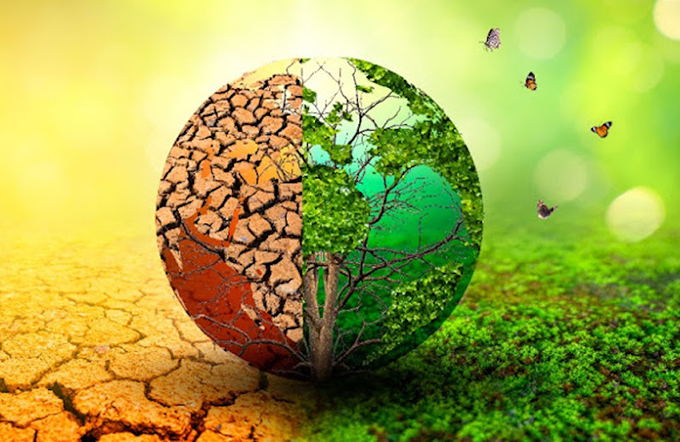
The European Photovoltaic Industry Association (EPIA) together with Greenpeace International predict that green jobs will become a global trend starting in 2025 . However, the United Nations Development Program (UNDP) estimates that by 2030, 60% of the world’s young generation will not have the green skills needed to enter the era of green jobs .
Green jobs are types of work that contribute to preserving and restoring environmental quality caused by company activities and economic sectors. This work includes , for example, work that can help protect ecosystems and biodiversity; reduce energy, materials, and water consumption; decarbonization of the economy; and reduce or prevent the creation of all forms of waste and pollution. One form of green jobs today is the job of a Solar Power Plant (PLTS) technician who is responsible for transforming renewable energy to make it sustainable.
To support the creation of green jobs , the Higher Education Sustainability Initiative , an open partnership between several UN agencies and the higher education community, is campaigning “ Education for Green Jobs ” as an effort to facilitate the demand for green jobs through education.
What are the steps?
Building green awareness
Green awareness is an attitude that is considered pro-environment. This awareness understands the importance of reducing the ecological footprint to maintain the sustainability of the Earth, as a form of facing critical environmental challenges.
To support green jobs in the future, educational institutions need to foster green awareness so that they can encourage students to implement sustainable practices, such as reducing carbon footprints in daily life through walking, cycling or using public transportation.
Schools in Indonesia can also build green awareness by strengthening environmental literacy in learning activities. According to the Organization for Economic Cooperation and Development _ (OECD), green awareness includes:
- Awareness of environmental issues: Measured by how much information students receive about current environmental issues.
- Perception of environmental problems: Measured by how much students care about environmental problems.
- Environmental optimism: Measured by students’ belief that their actions or human actions can contribute to the preservation and improvement of the environment.
In building green awareness , teachers act as main facilitators in conveying knowledge and understanding of environmental issues. Teachers form sustainable character and values, for example by providing students with a strong conceptual foundation about the importance of protecting the environment.
The Independent Curriculum currently used by schools has not succeeded in making environmental awareness something close and relevant for students. Even though learning is integrated, there are still knowledge, skills and infrastructure barriers that need to be overcome. This shows that efforts to build green awareness are not only the responsibility of teachers, but also schools and the government collaboratively.
Revitalizing education
Forms of educational revitalization to meet the demands of green jobs can be carried out by focusing on developing human resources from an early age. Starting from making educational policies to establish competency standards that lead to skills and readiness to face environmental challenges in the future.
This policy also needs to pay attention to elements of continuity and continuity at all levels. Education observer Ina Liem in an interview at VOA Indonesia said that, in elementary to high school, the education system often has environmentally friendly projects, but these efforts do not continue to universities.
Integration of green skills curriculum
A green skills curriculum is an urgent need in line with the increasing demand for economic growth that adheres to ecological principles and social welfare . The integration of the green skills curriculum into education has the opportunity to make students better prepared to overcome environmental and social welfare issues that support Earth-friendly development .
According to the OECD, green skills consist of cognitive competencies (cognitive abilities for understanding ecology and environmental solutions), interpersonal skills (communication and collaboration skills in an environmental context), and intrapersonal competencies (the ability to manage oneself and motivation for pro-environmental action).
Basic and core competencies in green skills need to help students understand the concept of sustainability as a whole. They are not only taught to understand the environmental impact of human actions, but also to design sustainable solutions through their future work. Students need to act as a driving force for transformation that applies sustainability principles in every aspect of their lives, both at a personal and professional level.
In practice, green skills competency does not only involve studying biology, geography or environmental science subjects, but also needs to be expanded to various scientific disciplines. Green skills need to be integrated into every subject with the aim of creating competencies that are in line with the demands of green jobs .
In mathematics subjects , for example, the integration of green skills can be carried out when studying geometry – students are not only invited to understand concepts and formulas, but are also given the opportunity to mathematically describe ecologically based garden designs or design environmentally friendly city layouts.
Then in sociology subjects , the integration of green skills can involve local wisdom so that students understand the relationship between climate change and socio-cultural dynamics according to the local context of each region.
Green skills can also be integrated into information technology subjects by creating applications or technological solutions to monitor and manage energy consumption. Economics subjects can integrate green skills practices to create eco entrepreneurship or environmentally friendly business activities.
In the end, the integration of a green skills curriculum that is aligned from elementary school to university can prepare for the actual needs of the job market in the green jobs sector .
Author Bio: Linga Utami is a PhD Student at the Indonesian Education University
